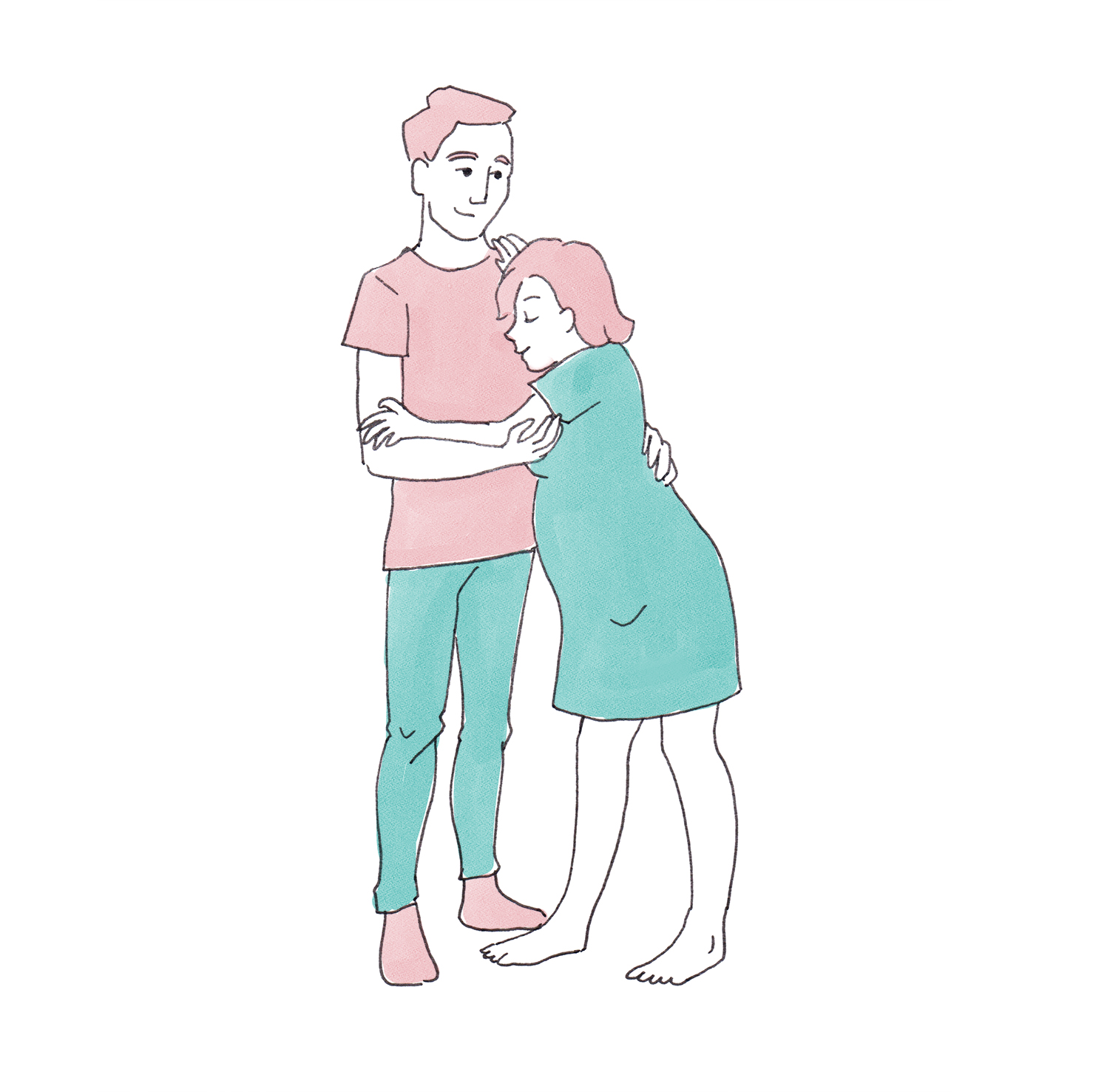Birth standing, kneeling, squatting
The birth posture determines whether the woman's pelvis can widen enough
A researcher is quoted as saying: "The lying birth is the second stupidest after the headstand" (according to W. Schiefenhövel).
Giving birth in a favorable posture, moving around and trying different postures, allows you to take advantage of gravity and help the baby progress. Body-produced labor pains are always accompanied by pain-relieving substances produced by the body itself (endorphins).
Childbearing women should be encouraged to avoid the supine position (5.41 and 8.7) (16), especially in the last phase of birth, the exit phase.
The individual woman should be encouraged to assume positions that are most comfortable for her. With her movements, she supports the work of the uterus. At the same time, she helps her baby to squirm through the birth passage.
The birth stool comes back into use after 170 years of prohibition. This and any other upright position allows the woman's pelvis with its moving parts to widen optimally. In particular, the coccys can bend backwards away from the body, making room even for a stronger baby. This would be impossible in a lying or semi-sitting position.
 Hanging. In some clinics, a strong rope or cloth hangs from the ceiling. The birthing woman can hang herself in the rope or in her partner’s arms and thus use the force of gravity. Important: really "hang" from the pelvis properly, like a sack of flour.
Hanging. In some clinics, a strong rope or cloth hangs from the ceiling. The birthing woman can hang herself in the rope or in her partner’s arms and thus use the force of gravity. Important: really "hang" from the pelvis properly, like a sack of flour.
"Upright birth saves time and energy and reduces the likelihood of birth being influenced and prolonged with medication." (13)
(13) Quote Ina May Gaskin, midwife, recipient of the Alternative Nobel Prize.
(16) These numbers refer to the location in the abbreviated version of the guideline "Vaginal Birth at Term."
